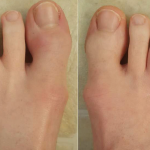 EULAR 2021—Should we lump, or should we split? This was the interesting question posed during EULAR 2021 by Laura Coates, MBChB, MRCP, PhD, clinician-scientist and senior clinical research fellow at the National Institute for Health Research, University of Oxford, England, in her presentation on psoriatic arthritis (PsA) outcome assessments in clinical practice and trials.
EULAR 2021—Should we lump, or should we split? This was the interesting question posed during EULAR 2021 by Laura Coates, MBChB, MRCP, PhD, clinician-scientist and senior clinical research fellow at the National Institute for Health Research, University of Oxford, England, in her presentation on psoriatic arthritis (PsA) outcome assessments in clinical practice and trials.
Why do we need outcome measures? Dr. Coates explained that, in seeking to know if the treatment of patients is achieving success, rheumatologists hope to identify the true status of disease activity. However, this proposition is unlike the treatment of hypertension, which can use blood pressure as the only relevant outcome measurement. No single test, laboratory or imaging study, or other variable can capture the totality of true disease activity in a condition like PsA.
Each outcome measure used in PsA provides an individual perspective on a patient’s status. By putting all these outcomes together, the clinician gains a better sense of the global disease activity.
Next, Dr. Coates asked: What do we need to measure in PsA? Typically, outcomes of interest in rheumatology relate to degree of active inflammation, symptoms, functional impact on a patient’s ability to work or participate in exercise and leisure activities, and quality of life. Hard outcomes, such as bone or joint damage and degree of disability, are also important measures to the clinician and patient alike.
Dr. Coates’ third question: What matters to patients? Historically, many outcome measures have been developed by clinicians and researchers, with less direct input from patients themselves.
In 2017, a study from Tilett et al. ranked outcomes identified as important to patients with PsA and examined their representation in existing composite measures. The researchers collected input from 31 patients with PsA via seven meetings using nominal group technique, a structured method for brainstorming that encourages contributions from everyone and facilitates quick agreement on the relative importance of topics. The treatment outcomes ranked highest by patients were improvements in pain, fatigue, physical fitness, halting or slowing of damage and quality of life/well-being. The authors of the study point out that, in reviewing the existing composite measures for PsA, no single measure adequately identified all of these outcomes.1
According to Dr. Coates, because pain and fatigue are consistently regarded by patients as critical concerns, recent work has examined if these domains should be combined in outcome measurements.
However, in a study of 141 patients with PsA, in which researchers used modified versions of the Composite Psoriatic Disease Activity Index (CPDAI) and the Group for Research and Assessment of Psoriasis and Psoriatic Arthritis (GRAPPA) Composite Exercise (GRACE) measures, the addition of pain and fatigue did not improve the measures’ ability to detect disease status in terms of requiring treatment escalation.2
Most patients have evidence of disease activity across multiple domains, & it’s the constellation of multi-domain findings that defines a patient’s true disease activity, level of functioning & quality of life.
Individual vs. Composite Measures
On the subject of single vs. composite measures, Dr. Coates said PsA is a disease that can involve manifestations across multiple domains, including arthritis, enthesitis, dactylitis, axial spondyloarthritis, skin and nail disease, and common comorbid conditions, such as inflammatory bowel disease.
Most patients have evidence of disease activity across multiple domains, and it’s the constellation of multi-domain findings that define a patient’s true disease activity, level of functioning and quality of life. Thus, several multi-domain composite scores have been developed to attempt to summarize disease activity across different domains and reflect the overall disease burden of PsA.
Individual and composite measures both have strengths. Individual measures allow for accurate estimation of disease activity in each domain. This approach may influence treatment choices because some medications show greatest efficacy for particular disease manifestations (i.e., peripheral arthritis or skin involvement). Additionally, individual measures may serve as the primary outcome in clinical studies focusing on a single disease domain.
Composite measures allow for the estimation of overall disease activity and may influence treatment decisions based on overall disease burden. They can also provide an efficient primary outcome for studies looking to assess overall efficacy, which can be specifically helpful for trials with small sample sizes.
Binary vs. linear scoring: Outcome measures can also be expressed in either a binary or linear fashion. Binary scores are those in which a patient either does or does not meet the criteria for that score, which is the case for the Minimal Disease Activity (MDA) score. In contrast, a linear score, such as the PsA Disease Activity Score (PASDAS) or Disease Activity in Psoriatic Arthritis (DAPSA), has a spectrum of possible scores that can be used to grade a patient’s disease activity.
For a binary score, it’s somewhat easier for rheumatologists to agree on when a patient meets the definition of low disease activity, Dr. Coates noted. For a linear score, interpretation can be more challenging. Example: Two patients may have the same DAPSA scores and the same swollen and tender joint counts. Yet if one patient has polyarticular disease and has required only one treatment and the other has oligoarticular disease and multiple therapies have failed to control the disease, then the scores may need to be interpreted in the context of each patient’s history.
Clinical Trials
The final subject discussed in the lecture was applying outcome measures to clinical trials and clinical practice. Ideally, it’s helpful when outcome measures can be used for both purposes, but this can be challenging; measures are time consuming with respect to data collection and calculation. Dr. Coates said it’s possible to modify components of the data collection process to make such measures more time efficient. This approach can be accomplished by using shorter questionnaires, having patients enter data while in the waiting room—including via electronic tablets that directly transmit this information into the medical chart—and having formulas to calculate the outcome measure already integrated into the electronic health record system.
Jason Liebowitz, MD, completed his fellowship in rheumatology at Johns Hopkins University, Baltimore, where he also earned his medical degree. He is currently in practice with Skylands Medical Group, N.J.
References
- Tillett W, Dures E, Hewlett S, et al. A multicenter nominal group study to rank outcomes important to patients, and their representation in existing composite outcome measures for psoriatic arthritis. J Rheumatol. 2017 Oct;44(10):1445–1452.
- Tillett W, FitzGerald O, Coates LC, et al. Composite measures for clinical trials in psoriatic arthritis: Testing pain and fatigue modifications in a U.K. multicenter study. J Rheumatol Suppl. 2021 Jun;97:39–44.


